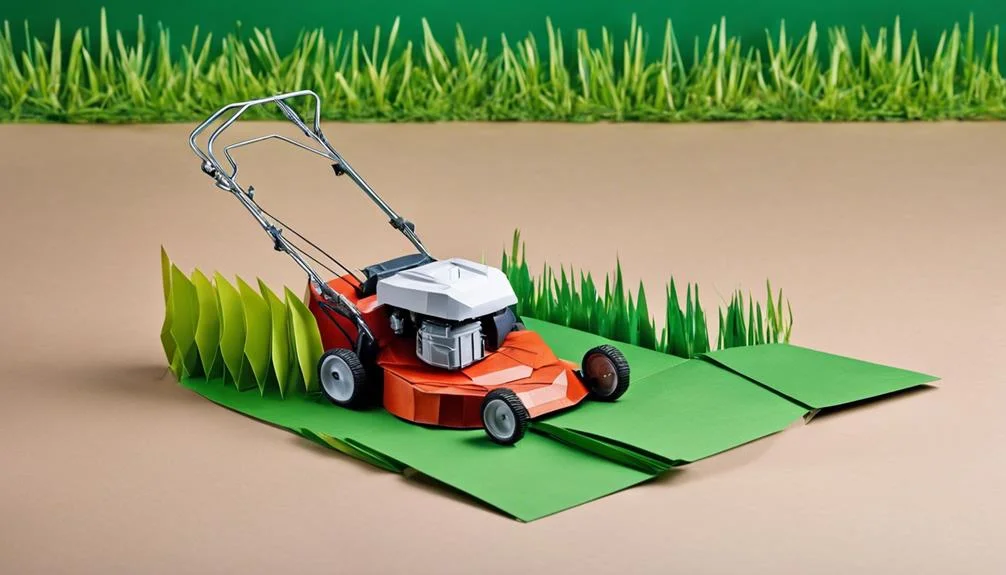In the realm of lawn maintenance, the choice between high lift mower blades and their conventional counterparts is pivotal, each offering distinct advantages and presenting unique challenges.
High lift blades excel in creating a significant airflow, which is instrumental in effectively bagging clippings and ensuring a clean, even cut across taller and wetter grass varieties. Yet, this increased efficiency comes at the cost of higher noise levels and potential incompatibilities with certain mowers or lawn types.
As we explore the nuances of these blades, it becomes apparent that their suitability hinges on specific landscaping needs and conditions, prompting a closer examination of their role in achieving the desired aesthetic and functional outcomes in lawn care.
Key Takeaways
- High lift blades ensure precise, efficient cuts and superior grass suction, ideal for bagging or mulching.
- They are adept at handling tall, wet grass and effective in leaf blowing, enhancing lawn appearance.
- Increased fuel consumption and noise levels are notable drawbacks, affecting operational costs and comfort.
- Regular maintenance and adherence to safety measures are crucial due to risks of projectile debris and elevated noise.
Understanding High Lift Blades
High lift mower blades are designed for precision and efficiency in lawn maintenance. They elevate grass significantly to optimize bagging or discharge, creating a vacuum effect that pulls the grass towards the cutting deck for an even and thorough cut. This technology is beneficial for managing tall or wet grass, offering multiple lifting options for various lawn conditions.
Ideal for commercial landscaping projects, high lift blades excel in efficient grass collection and disposal. While they may produce more noise during operation and could have compatibility issues with shorter grass types, their enhanced cutting capabilities make them stand out. The engineering behind high lift mower blades reflects a commitment to optimizing the lawn maintenance process, ensuring manicured lawns that are healthier due to even cuts and efficient disposal of grass clippings.
Pros of High Lift Blades
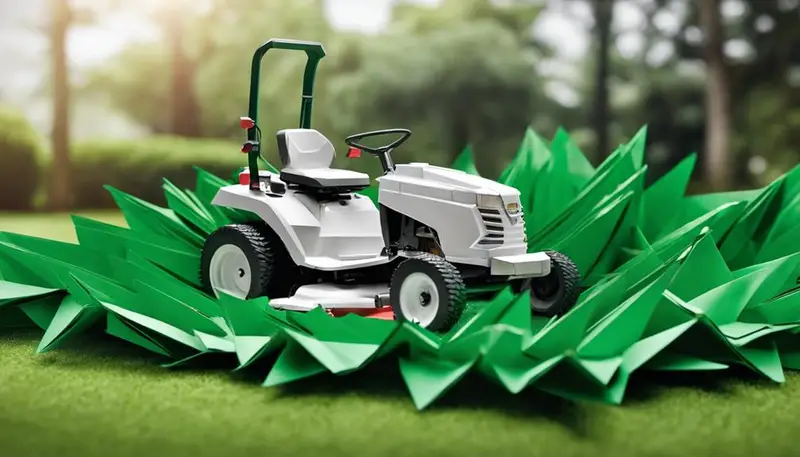
One significant advantage of utilizing high lift blades in lawn maintenance is their superior suction capability, which ensures a cleaner and more precise cut compared to standard blades. This enhanced suction is not only pivotal for a meticulously groomed lawn but also plays a crucial role in dispersing grass clippings more efficiently. High lift blades excel in this area by blowing the clippings farther away from the cutting deck, thereby facilitating a more effective collection process. This characteristic is particularly beneficial for those who prioritize a tidy appearance and wish to avoid the hassle of raking after mowing.
Moreover, high lift blades demonstrate a remarkable proficiency in lifting and mulching pine needles, a common challenge in many yards, thereby contributing to a healthier and more aesthetically pleasing outdoor space. Their utility extends into the fall, proving to be excellent tools for blowing leaves, which further underscores their versatility across different seasons.
To enhance their performance even further, some high lift blades come equipped with welded tabs on their tips. This modification serves to amplify their effectiveness, ensuring that users can enjoy an even higher quality of lawn maintenance.
Cons of High Lift Blades

Turning our attention to the drawbacks of high lift mower blades, it is important to weigh the potential challenges they present.
Notably, these blades can lead to increased fuel consumption and a noticeable rise in noise levels during operation, considerations that may affect user experience and operational costs.
Additionally, their effectiveness varies across different grass types, which may limit their versatility and impact the quality of lawn care.
Increased Fuel Consumption
While high lift mower blades are designed to enhance grass cutting by creating more suction, this feature also leads to increased fuel consumption as a notable drawback. The additional power required to generate this increased airflow and suction means that mowers equipped with high lift blades use more fuel than those with standard blades.
Especially when mowing through thick or wet grass, the fuel demand climbs significantly to maintain the same level of cutting efficiency. This design, while effective for lifting grass higher for a cleaner cut, places a higher demand on the fuel system.
For individuals and professionals considering high lift mower blades for their mowing needs, it is crucial to weigh the potential increase in fuel consumption against the benefits of improved cutting performance.
Noise Level Rise
Amid the benefits high lift mower blades offer, an increase in noise levels stands out as a significant drawback, particularly for those sensitive to loud sounds. While these blades are designed to enhance the mower's cutting and bagging performance, they can generate higher noise levels compared to standard blades.
This increase can be a concern for:
- Users in noise-restricted areas or residential neighborhoods who may face complaints or legal issues due to the loud operation.
- Individuals sensitive to loud noises, for whom the increased decibel levels could lead to discomfort or hearing issues over time.
- Anyone without proper ear protection, as prolonged exposure to higher noise levels may necessitate the use of protective gear to minimize health risks.
Choosing high lift mower blades requires weighing these noise-related considerations against their performance benefits.
Limited Grass Types
Beyond the noise-related drawbacks, another limitation of high lift mower blades lies in their selective efficacy across different grass types. Notably, high lift blades may not be the optimal choice for cutting short grass types, where they often struggle to lift and cut efficiently. This limitation can result in uneven cutting results on specific grass types, undermining the aesthetic appeal of a lawn.
Some users have reported noticeable performance limitations when using high lift blades on certain grass species, highlighting a lack of versatility. The effectiveness of these blades, therefore, may vary significantly based on the type of grass being mowed, making them less suitable for a diverse range of lawn care needs.
Efficiency and Performance
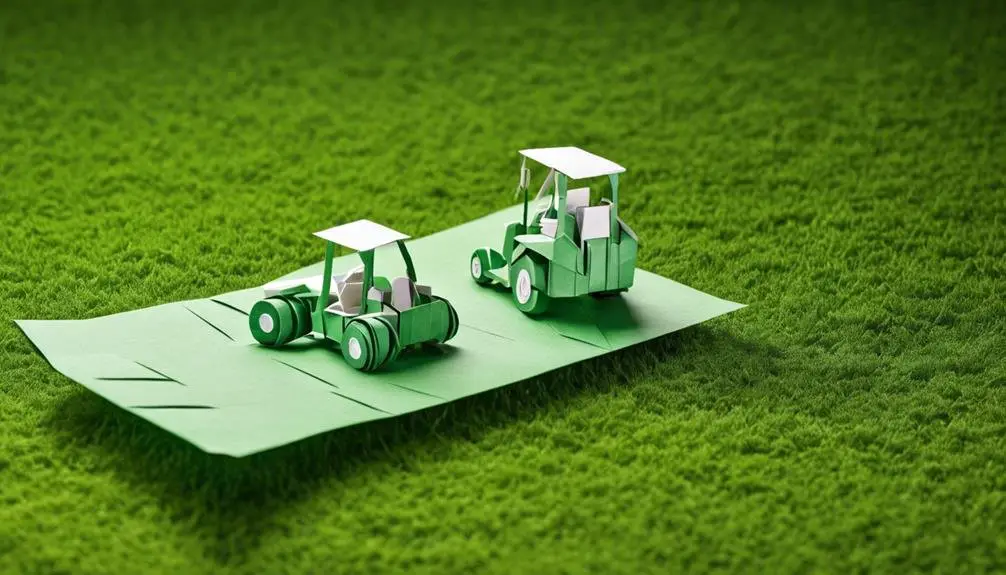
Regarding efficiency and performance, high lift mower blades stand out due to their superior suction and airflow capabilities, which ensure a clean and efficient cut, particularly in challenging grass conditions. These blades are specifically designed to tackle tall and thick grass where precision and effective bagging are paramount. The unique design of high lift mower blades facilitates not just a meticulous cut but also plays a pivotal role in the management of grass clippings, making them especially beneficial for larger lawn areas where dispersal of clippings is crucial.
To highlight their advantages further:
- Superior Suction and Airflow: Their design allows for optimal lifting of grass, ensuring that each blade is cut evenly, which is vital for maintaining lawn health and appearance.
- Ideal for Tough Conditions: High lift blades are the go-to option for handling tall, thick grass, proving their worth in situations where other blades might falter.
- Enhanced Clipping Disposal: These blades excel in blowing clippings away efficiently, thus facilitating easier cleanup and disposal, which is particularly advantageous for commercial landscaping tasks.
Despite the potential for increased noise, the efficiency and performance benefits of high lift mower blades, especially in commercial settings, are undeniable, making them a preferred choice for those prioritizing a clean, precise cut and effective grass management.
Maintenance Considerations
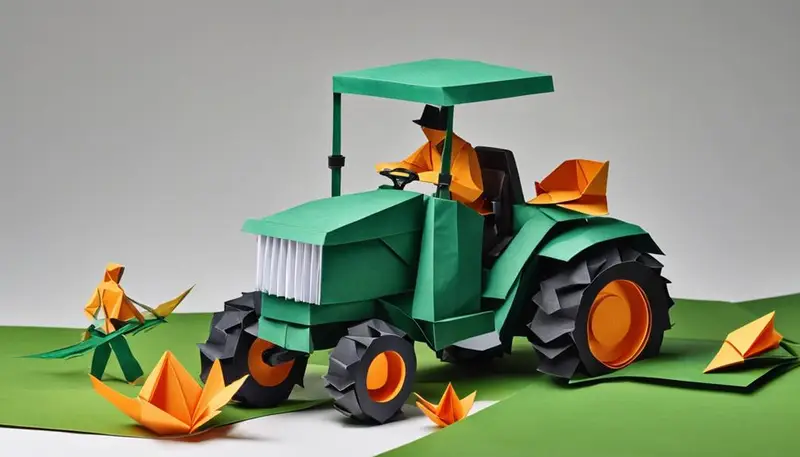
While high lift mower blades offer significant advantages in terms of efficiency and performance, their maintenance requires careful attention to ensure they continue to function at their best. Regular blade sharpening stands out as a cornerstone of maintaining these blades, directly impacting cutting performance and extending the blade's lifespan. A dull blade not only struggles to make clean cuts but can also stress the lawn mower's engine by requiring it to work harder.
Furthermore, monitoring blade balance is crucial for smooth mower operation. An unbalanced blade can cause vibration, leading to premature wear and potential damage to the mower. It's advisable to check for balance whenever blades are sharpened to avoid such issues.
Additionally, cleaning the blades after each use is vital. This practice prevents grass buildup, which can impair cutting efficiency and promote corrosion. Regular inspections for damage or wear are also essential. Spotting cracks, bends, or significant wear early can prevent breakdowns during operation.
Lastly, timely blade replacement is key to safe and effective mowing. Operating with worn or damaged blades risks both the quality of the cut and the safety of the operator. Adhering to these maintenance practices ensures that high lift mower blades deliver their best performance throughout their service life.
Safety Concerns
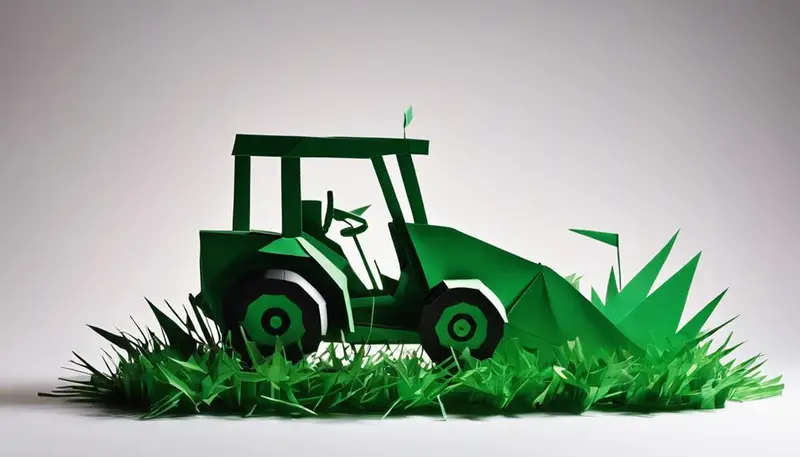
Turning our attention to safety concerns, high lift mower blades introduce specific risks, notably the increased likelihood of projectile debris and elevated noise levels.
These risks underscore the importance of employing protective measures and understanding the operational hazards associated with these blades.
Risk of Projectile Debris
High lift mower blades, known for their enhanced cutting efficiency, also raise concerns due to the increased risk of propelling debris at high speeds, which can pose significant safety hazards. The design of these blades, while effective for cutting, inadvertently increases the likelihood of ejecting objects such as rocks, twigs, and other debris with enough force to cause injury or damage.
To mitigate these risks, consider the following measures:
- Always wear protective gear, including goggles and sturdy shoes, when operating a mower equipped with high lift blades.
- Maintain a safe distance from bystanders, pets, and valuable property while mowing.
- Regularly inspect and properly maintain the blades to ensure they are securely attached and free from damage that could exacerbate the risk of projectile debris.
Enhanced Noise Levels
In addition to the risk of projectile debris, another concern with high lift mower blades is the elevated noise levels they produce during operation. These higher noise levels not only impact the operator's comfort but also necessitate the use of ear protection during extended periods of use.
The increased noise can be particularly disruptive in residential areas, potentially affecting the peace of the surrounding environment. Consequently, it's crucial for users to be cognizant of the noise levels produced by high lift blades, taking appropriate precautions to prevent potential hearing damage.
Moreover, when operating in noise-sensitive areas or near bystanders, the noise impact of these blades should be carefully considered to minimize disturbance and ensure safety for all involved.
Alternative Blade Options

Exploring alternative blade options, such as mulching blades, low-lift blades, gator blades, and standard mower blades, can significantly influence the quality and efficiency of lawn maintenance. Each blade type offers unique benefits tailored to different lawn care needs and preferences, impacting not only the appearance of the lawn but also the health of the grass.
- Mulching Blades: Specifically designed to cut grass clippings multiple times, mulching blades create fine mulch that decomposes quickly, returning valuable nutrients to the soil. This option is ideal for those looking to maintain a healthy, lush lawn without the additional task of removing clippings.
- Low-Lift Blades: Best suited for lawns that do not require significant air lift to remove debris, low-lift blades provide efficient cutting with minimal disturbance. These blades are an excellent choice for maintaining a neat appearance with less engine strain and reduced noise levels.
- Gator Blades: With their unique design, gator blades combine the functions of mulching and regular blades, offering efficient cutting and mulching in one. This versatility makes them a popular choice among homeowners seeking both a clean cut and the benefits of mulching.
Standard mower blades, on the other hand, serve as a versatile option for general lawn maintenance tasks, making them a reliable choice for everyday lawn care.
Conclusion
In conclusion, high lift mower blades present a beneficial choice for specific mowing conditions, particularly in managing tall and wet grasses through enhanced suction and airflow capabilities. However, these advantages are counterbalanced by potential drawbacks such as increased noise levels, compatibility issues with shorter grass types, and maintenance considerations.
It is imperative for users to weigh these factors against their unique landscaping needs, ensuring that the selection of mower blades aligns with the desired efficiency, performance, and safety requirements. Alternative blade options should also be considered in the decision-making process.
